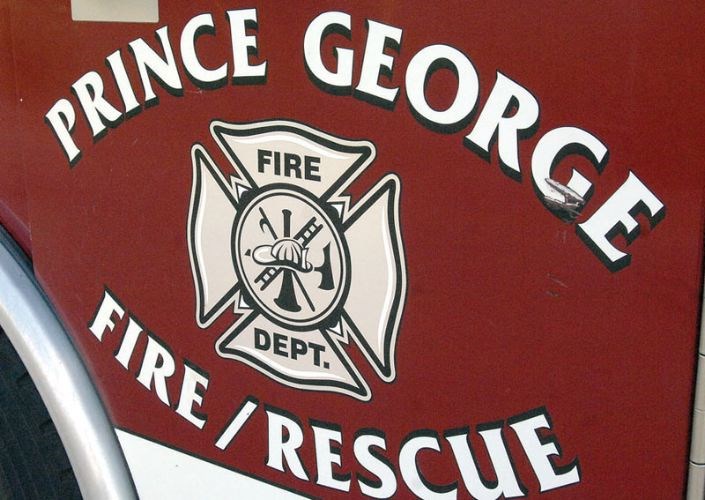With Highway 97 closed for the foreseeable future, Prince George's lifeline to the southern regions of the province is Highway 5.
This route is a wider loop around the central interior, taking drivers through McBride, Valemount, Blue River, Clearwater, Barriere, Vinsulla, and into Kamloops. From that leg, all the southern toes of the province are available.
This route skirts around the east side of the Cariboo mountains instead of the west side like Highway 97 does. It is considered by many to be one of the most picturesque stretches of highway in Canada, but is more remote than the Cariboo Highway option, since the amenities are fewer along the way.
The traffic is typically lighter as well, but that doesn't apply when the primary highway is closed. Those along the highway will tell you, from top to bottom, that things have been busier.
"It was murder, at times. Bumper to bumper, people tired, people angry, and yet people seem to be doing ok," said Mary Oakman of the Blue River Market, the town's oldest family-run store. Gas quantities at service stations have not been an impediment she'd heard of. She just heard of people stopping to top up more frequently just in case.
The worst case scenario amounted to the two main fires - the Thuya Lake Road fire and the Dunn Lake Fire, both adjacent to the community of Little Fort - growing large enough to endanger the highway.
Oakman's son drove to Kamloops on Tuesday and sent back reports. He told them "actually the fires were up on the mountain, not down near the road" so no consequences were in effect other than the smoke.
The majority of the traffic forced to use Highway 5 in a flurry had moved through the system, according to other vendors along the route. Staff at the PetroCan / A&W location in Barriere said they had no fuel shortages at their store and the traffic was "decently busy but not nearly crazy."
Karen Rashid agreed with that assessment, and she has critical context to speak from. She and her husband operated the McLure Cafe when the Barriere disaster happened in 2003. It was a sad irony that the cafe survived those fires but burned down two years ago and the couple has been unable to reopen, but they still reside there.
"Yeah, it's busy. Traffic is coming in spurts. It's busier than usual. It's not bumper to bumper all day. It's off and on, off and on," Rashid said. "It's warm and it's smoky. I'm staying in the house."
Air quality is the next concern on the list of Highway 5 worries. Oakman said her breathing was fine, but she knew of Blue River residents with respiratory difficulties and they simply hunkered down inside.
According to the narrow reporting window provided by the B.C. Ministry of Environment - forecasting about 24 hours at a time - the Kamloops and Okanagan areas of the province were experiencing high rates of pollution. Air advisories were in effect but the public was told to expect wide variations from place to place, and with changes in fire behaviour and weather.
According to the DriveBC website, and other provincial officials spoken with by The Citizen on Tuesday, the smoke was the only impediment for Highway 5.
"I've not heard of any issues on Highway 5," said Tracy Wynnyk, a fire information officer stationed at the Kamloops Fire Centre.
"Both of those fires (the two closest to the route) are quite a distance from the highway. As far as impacts to the highway, there is none at this time. Conditions change and weather changes, but when assessments are made (for DriveBC), there is some planning and some thought that goes into what would support public safety, and if these routes weren't deemed to be a safe option, they wouldn't be open. That route is open."
The agency responsible for operating ambulances in B.C. has been monitoring their service capacity, since the evacuations in the Cariboo and Chilcotin regions also included patients in hospitals and residents of care homes. Ambulances were used in much of that transportation.
"We were very, very busy. But that's what paramedics are built for - just, go - and there was a lot of stepping up to the plate by paramedics based in the interior," said Lesley Pritchard, spokesperson BC Emergency Health Services. "It's really something that gives me so much pride, to hear how they all pitched in to help patients, and all the Health Authorities involved will tell you the same from their end."
Having a provincial ambulance system means resources can
be moved as needed, and Highway 5 is covered normally, Pritchard said.
"Response times have not changed in the last three days. We are getting to our calls within our goals. Obviously this is an ever-changing situation and we will keep monitoring things."
That "wait and see" philosophy was the consensus among those involved in all facets of the wildfire response system, but Highway 5 is still an open and operating lifeline between Prince George and the rest of the south and east of the province barring any changes of the current conditions.



